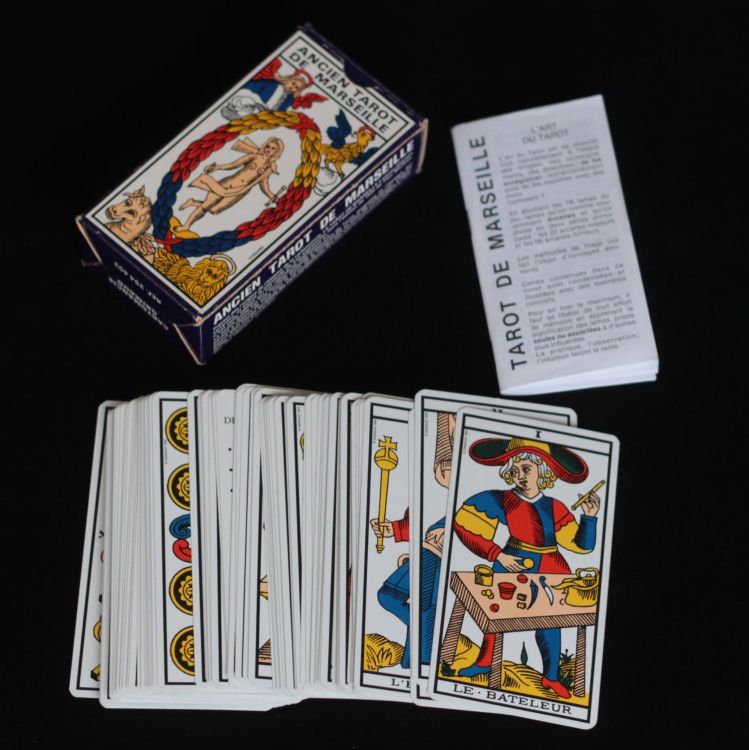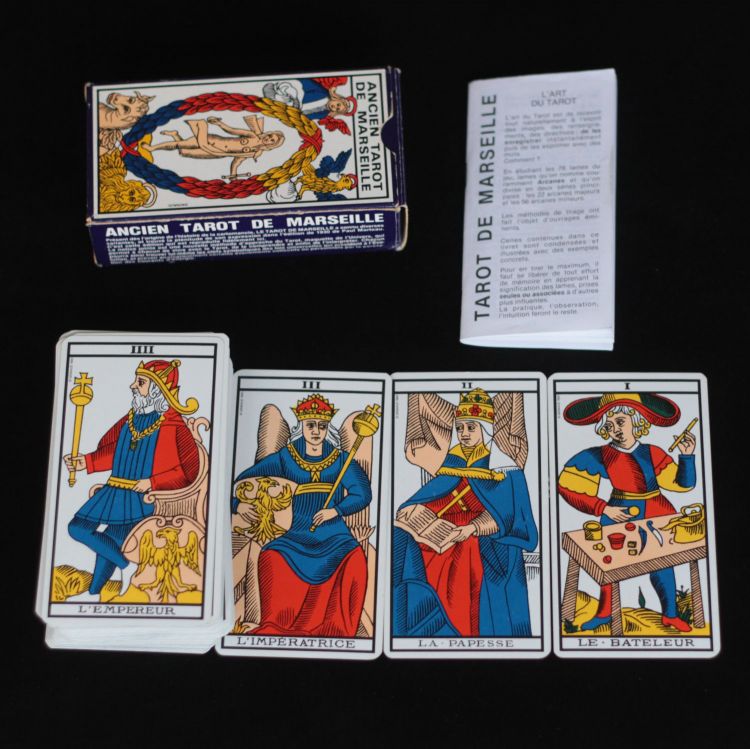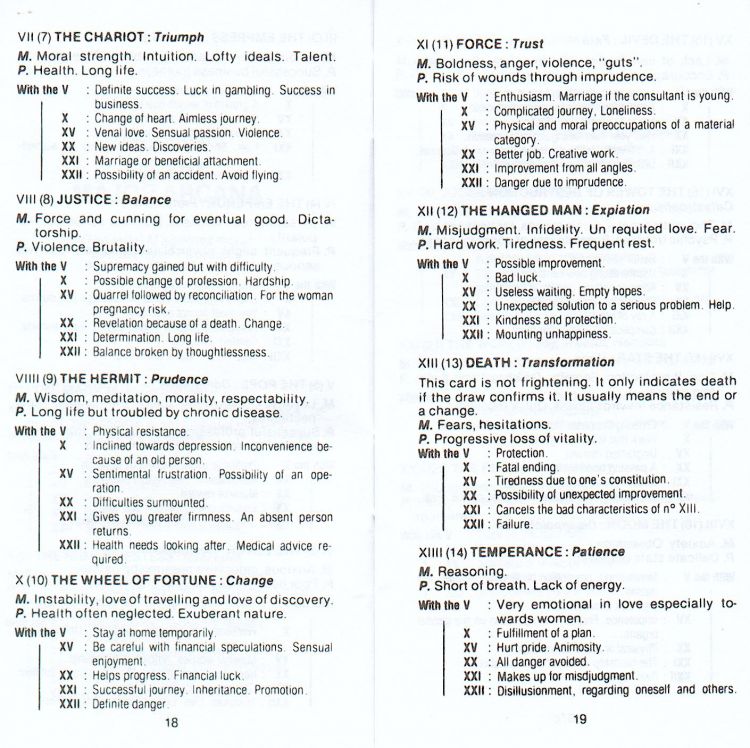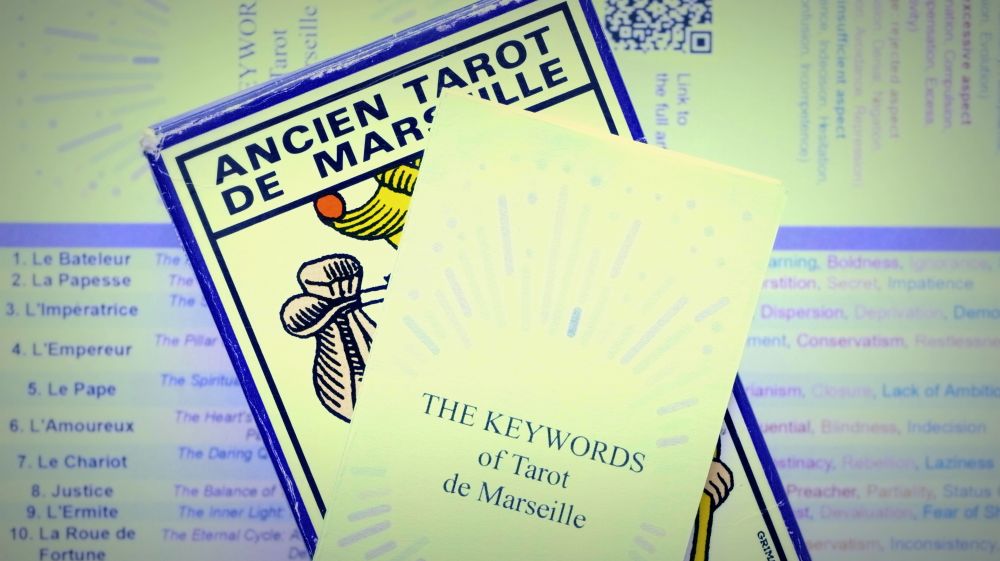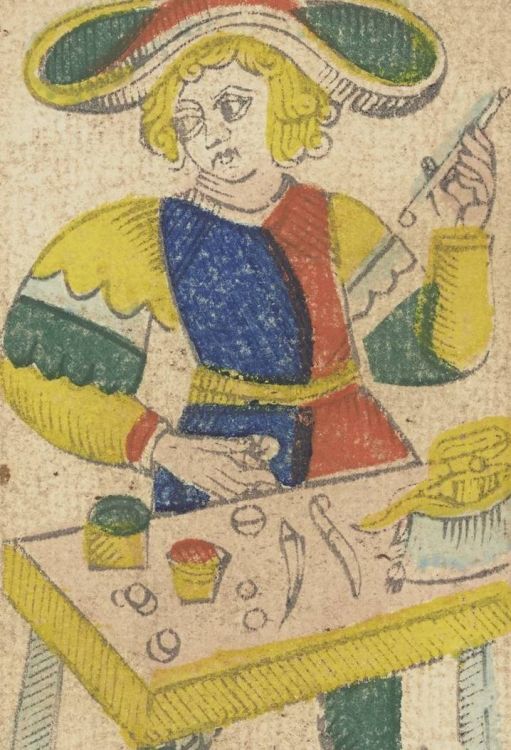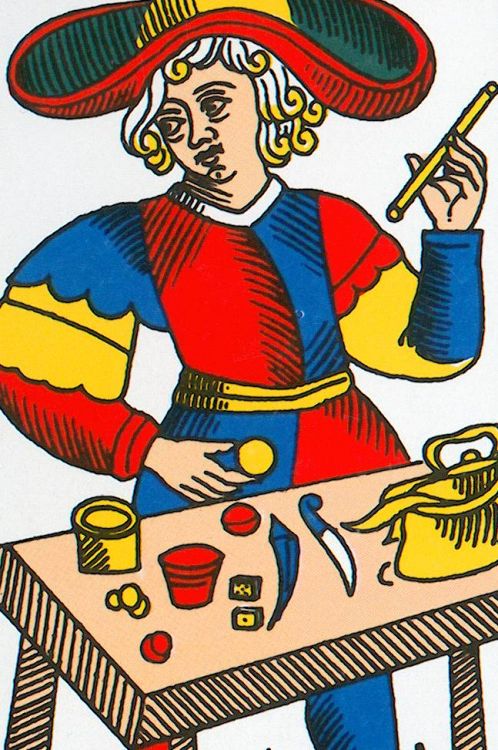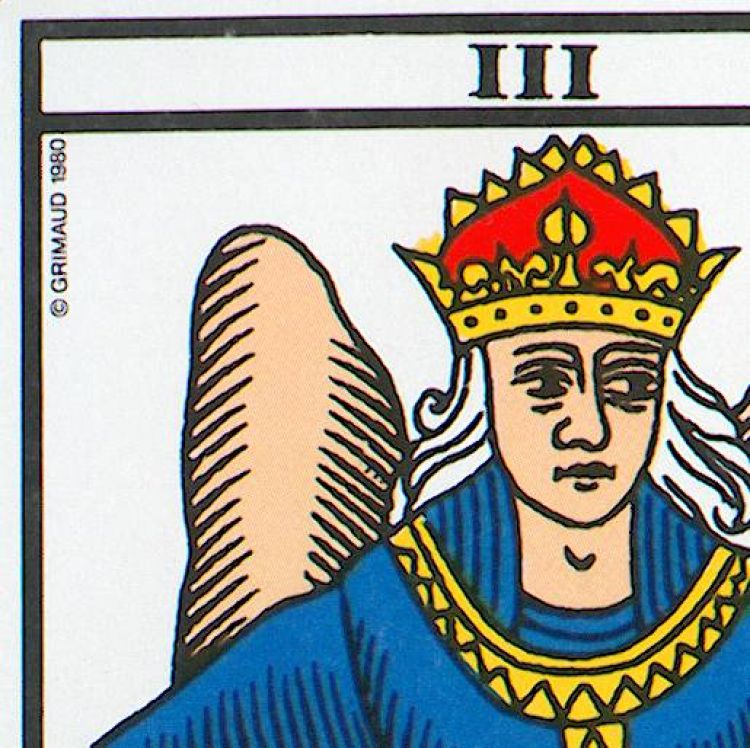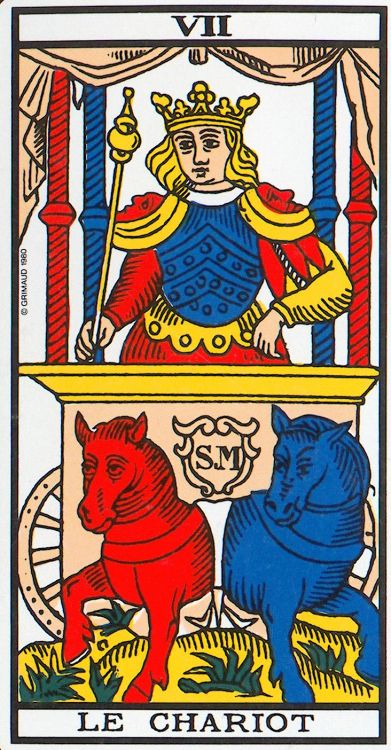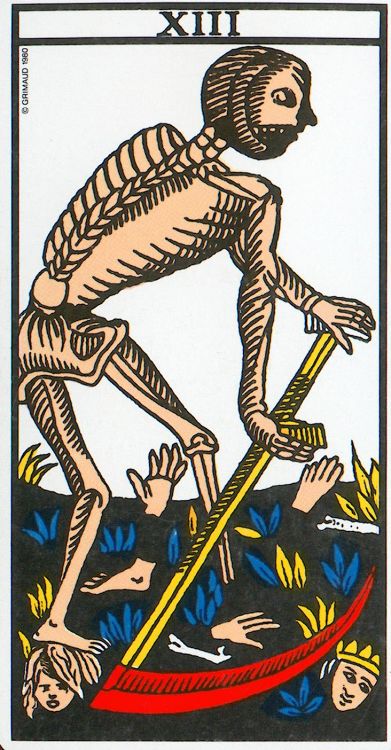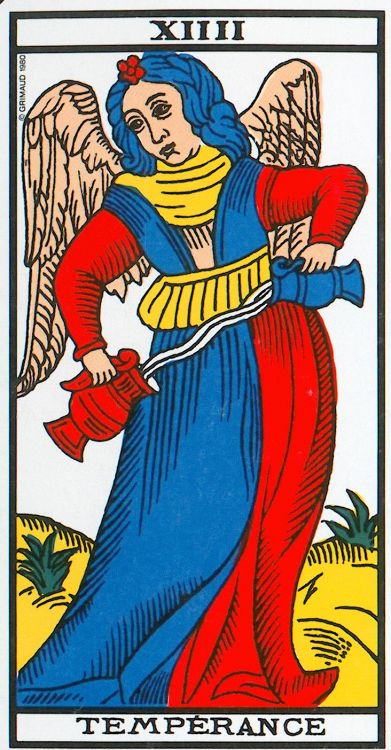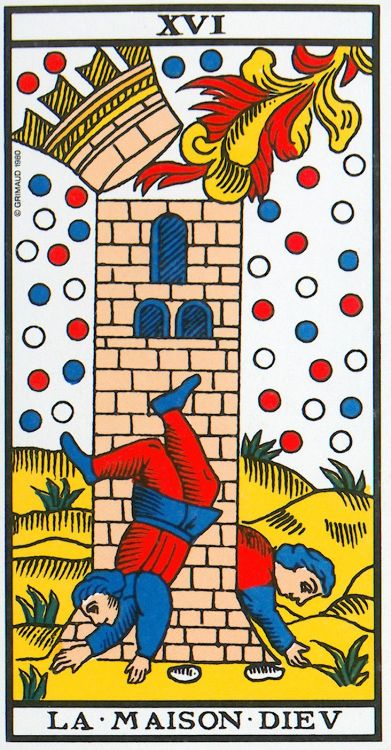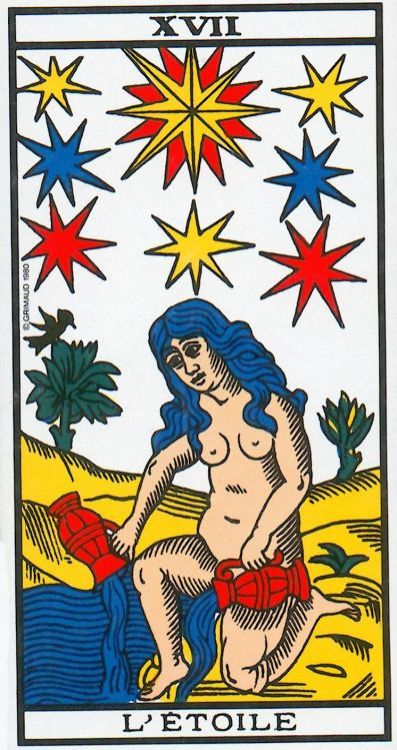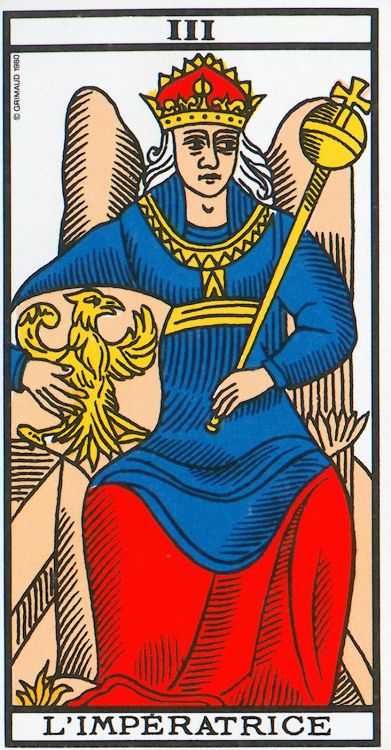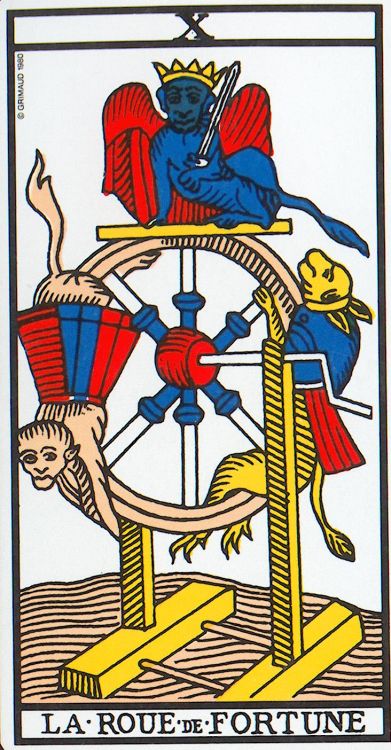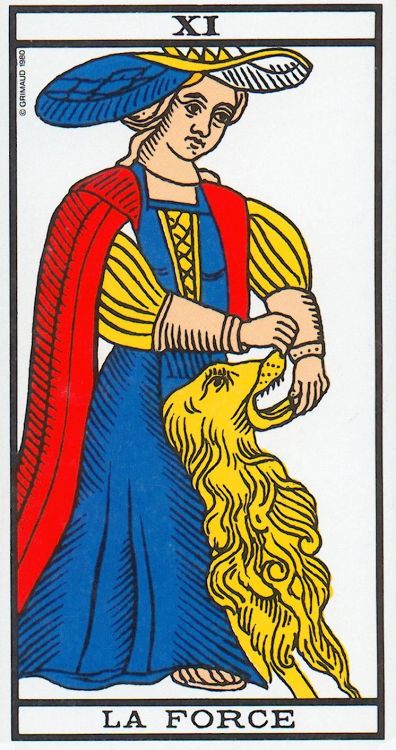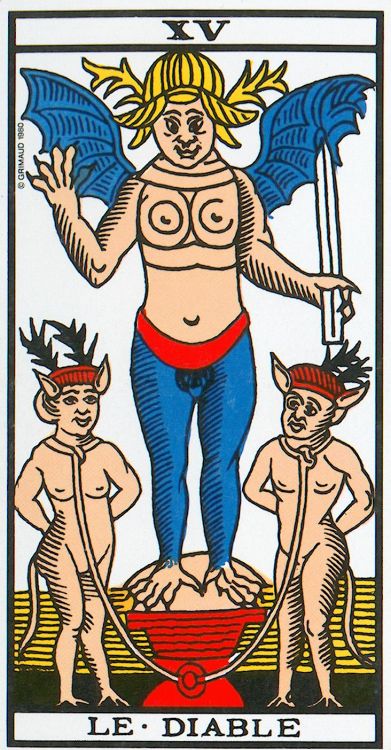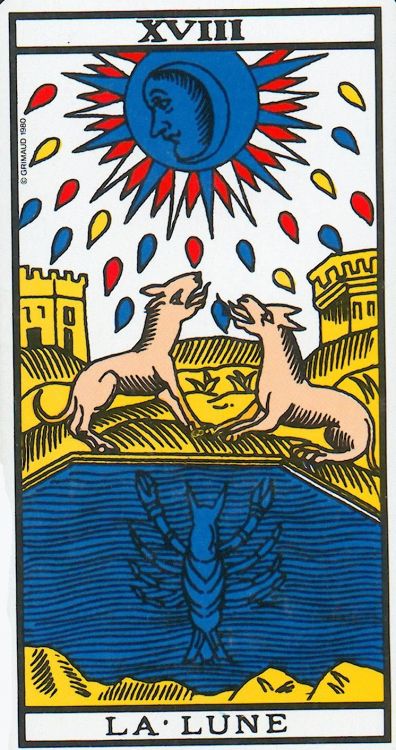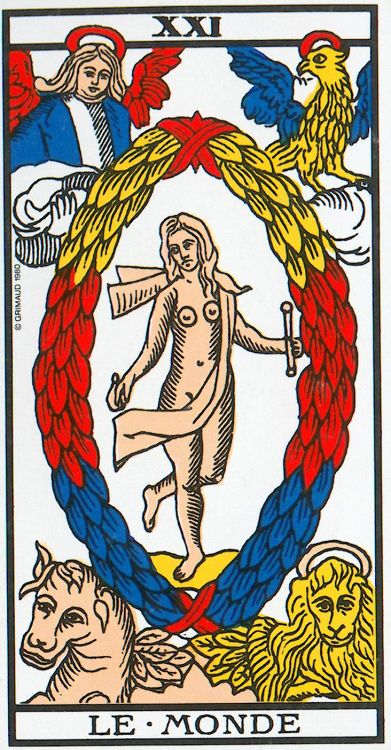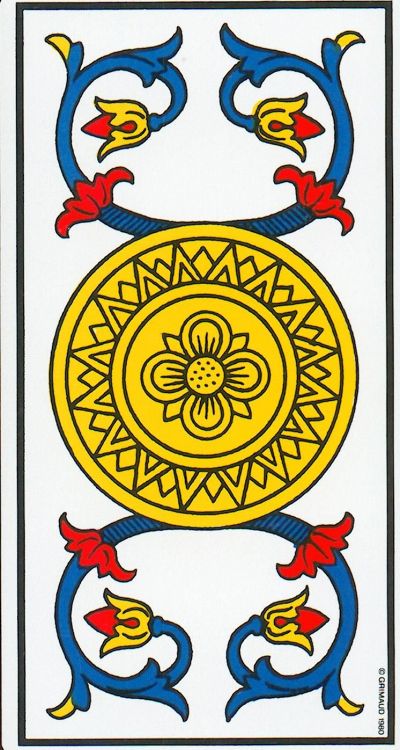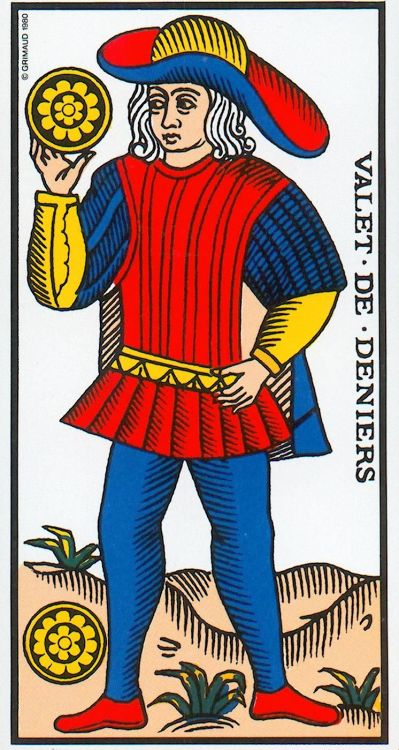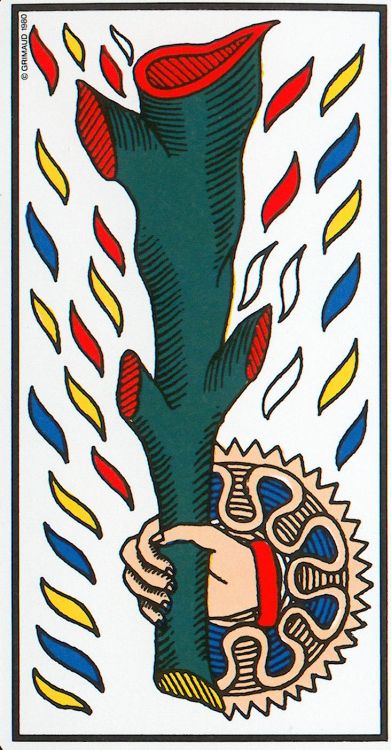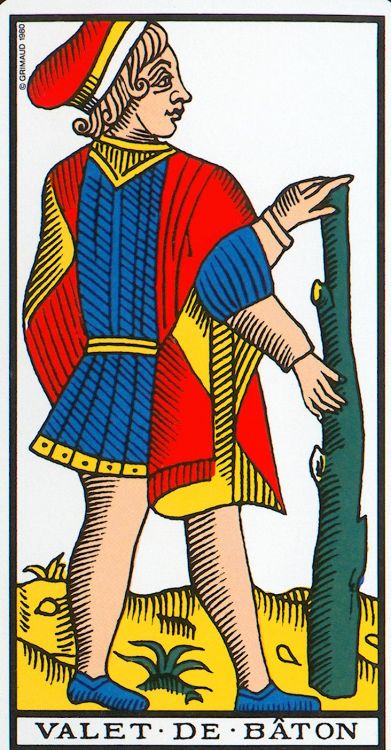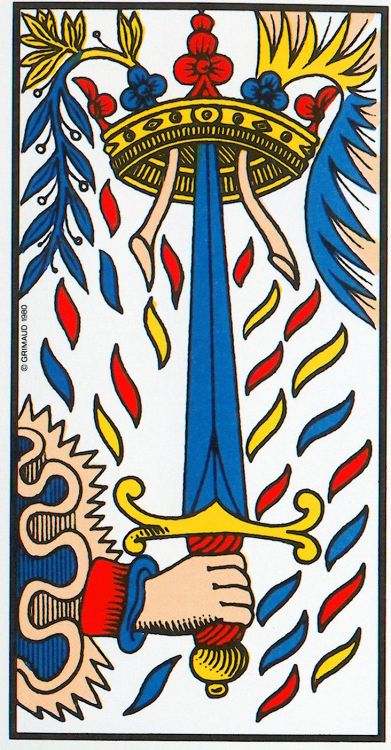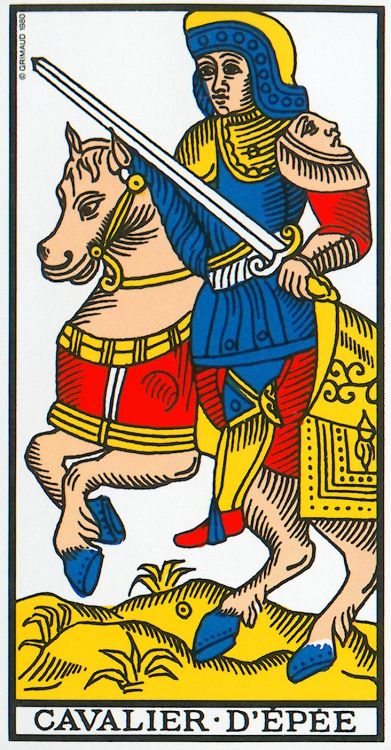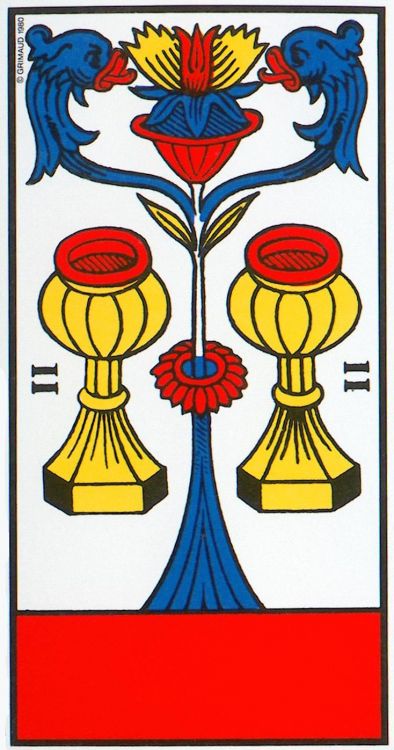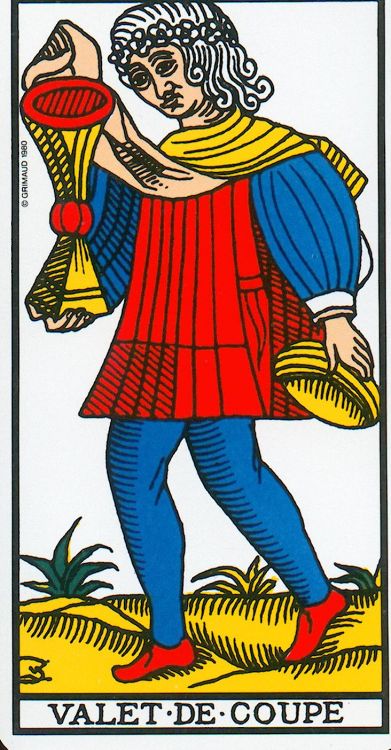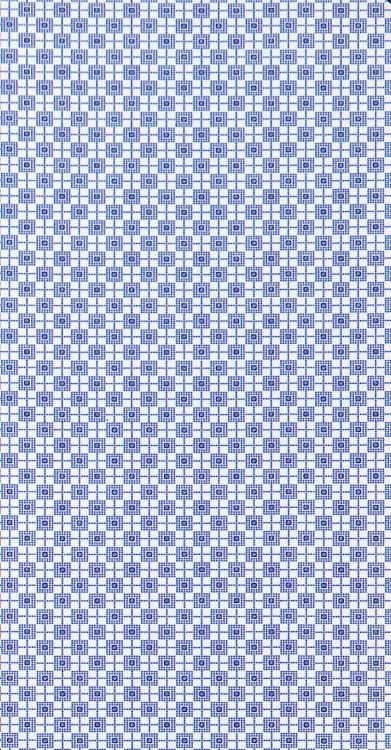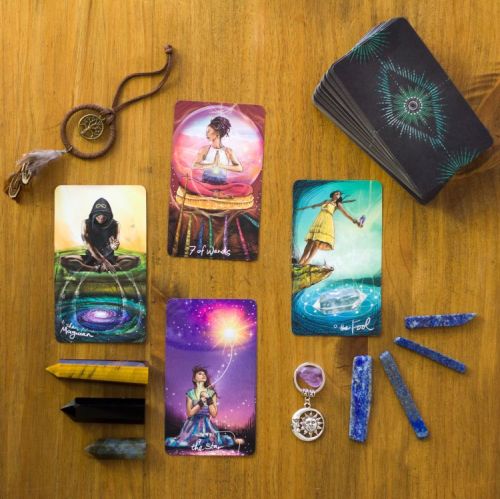Criticisms about this tarot are for the majority: awful colors, a coarse fineness of the lines and a shameful copyright. It is difficult not to take these remarks into account.
However, two points must be admitted:
- No matter what one says about this deck, it remains a Tarot de Marseille of pure tradition. It thus proposes a Major Arcana of great coherence, based on a universal and profane symbolism. This makes it a much more interesting subject of study than many RWS Tarot decks, including the most beautiful and recent ones. A Tarot de Marseille, however indigestible it may be, remains a Tarot de Marseille!
- These colors, indeed vivid and even garish, nevertheless offer a first level interpretation, easy and simple to memorize, on which we can rely for our readings, even before entering into the in-depth learning of symbolism. For the beginner practitioner, it can be a good choice to acquire his first Tarot de Marseille. Its colors make it unsightly (according to taste) but at the same time it is easy to learn. I did my first readings with him, before moving on to other historical tarots of Marseille.
The last point in favor of this tarot, however decried, is its edition in 2 formats: a standard size and a mini size. (available here). With Camoin-Jodorowsky's tarot in mini size (available here),that I also do the review, it is the only Tarot de Marseille published in a small format. This mini size makes it transportable with oneself on a daily basis, and allows an improvised reading anywhere, on a café terrace table, on a public bench, on the cement of a jetty on the sea. When one wishes to democratize the tarot, demystify it, give it back its letters of nobility, it is necessary to know how to adapt and make an initiation anywhere and anytime... The interest of the mini format is then undeniable.
Finally you may prefer a modernized version of Paul Marteau's version with Fournier's tarot (my review here) which uses the same colors but with modern graphics.
To learn more and deepen your knowledge of tarot, check out my article on the meanings of the 78 tarot cards or on the 22 Trumps (major arcana).
